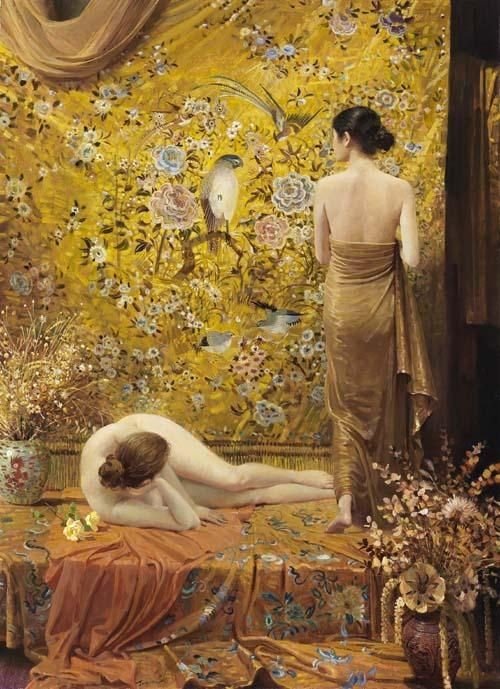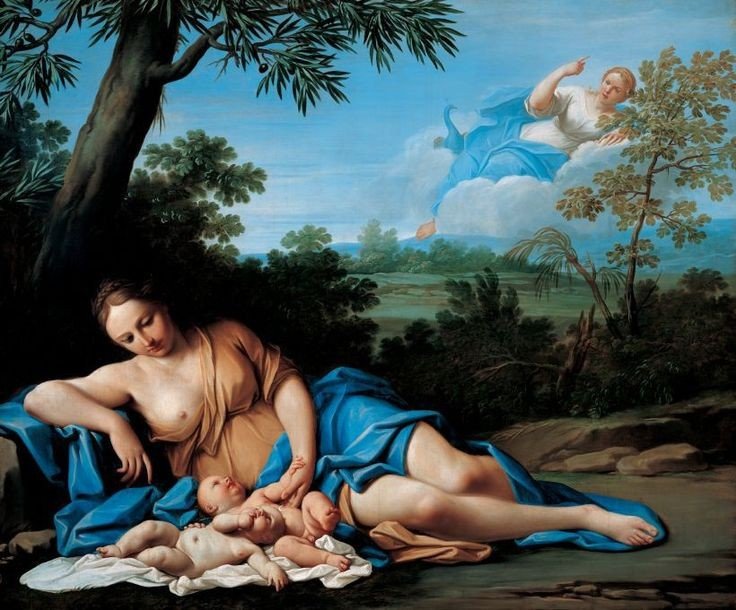Exploring Agnolo Bronzino’s ‘The Feast of Venus’: A Renaissance Ode to Love and Sensuality
In the heart of the Italian Renaissance, Agnolo Bronzino, a master of the Florentine School, gifted the world with a masterpiece that transcends time and captivates the soul— “The Feast of Venus.” This enigmatic painting, created around 1540, transports viewers into a realm of mythological allure, where love reigns supreme and sensuality dances in every brushstroke.
At first glance, the scene unfolds like a dream—a lush landscape, adorned with figures of ethereal beauty, bathed in the soft glow of divine radiance. In the center, reclining with grace and poise, is Venus, the goddess of love herself, surrounded by a celestial entourage of cupids and nymphs. Their bodies intertwine in playful abandon, as if caught in an eternal moment of ecstasy.
But beyond its aesthetic allure, “The Feast of Venus” is a tapestry woven with layers of symbolism and allegory, each element a thread in the rich fabric of Renaissance thought. Venus, the embodiment of love and desire, presides over the gathering, her presence infusing the scene with an aura of divine beauty and passion. The cupids, her playful attendants, symbolize the whims of love, their mischievous antics adding a touch of whimsy to the tableau.
Bronzino’s meticulous attention to detail is evident in every corner of the painting—the lush foliage, the intricate drapery, the delicate features of each figure—all rendered with a precision that borders on the sublime. Every gesture, every expression, speaks volumes about the complexities of human emotion and desire, inviting viewers to lose themselves in the timeless allure of the painting.
But perhaps what makes “The Feast of Venus” truly remarkable is its ability to transcend the boundaries of time and culture, speaking to the universal human experience of love and longing. In an age marked by social upheaval and political intrigue, Bronzino’s masterpiece offered a fleeting glimpse of paradise—a world where passion knows no bounds and beauty reigns supreme.
Indeed, the creation of “The Feast of Venus” was not merely an artistic endeavor but a testament to the enduring power of love to inspire and uplift the human spirit. Commissioned by a wealthy patron with a taste for the finer things in life, the painting served as a luxurious adornment for a private residence—a reminder of the joys of love and companionship in an often tumultuous world.
Today, “The Feast of Venus” remains a beacon of beauty and inspiration, its timeless allure drawing visitors from far and wide to marvel at its splendor. In a world increasingly dominated by technology and materialism, Bronzino’s masterpiece serves as a poignant reminder of the enduring power of art to touch the soul and elevate the human experience.
In conclusion, “The Feast of Venus” stands as a testament to Agnolo Bronzino’s genius as an artist and his profound understanding of the human condition. Through its exquisite beauty and timeless themes, the painting invites us to embrace the transformative power of love and revel in the splendor of the Renaissance spirit.





